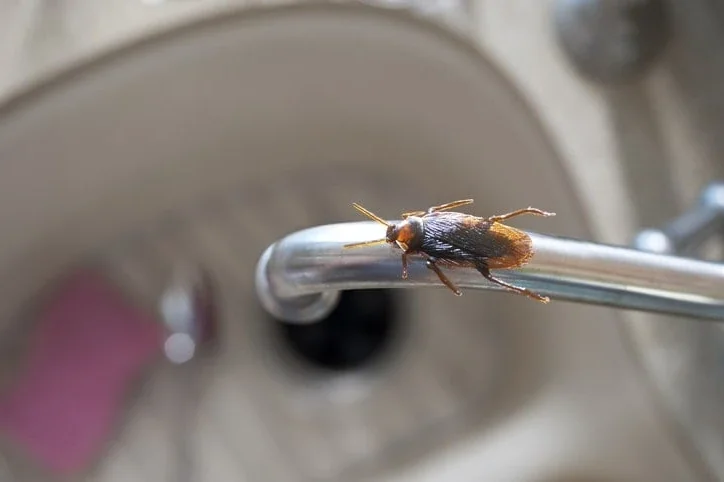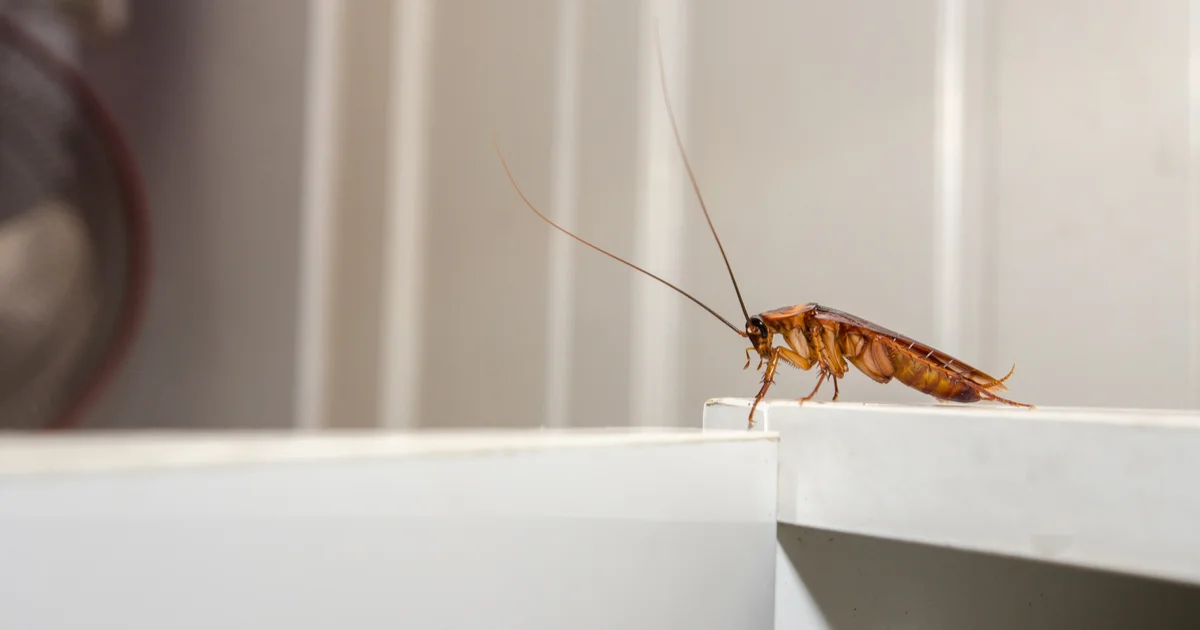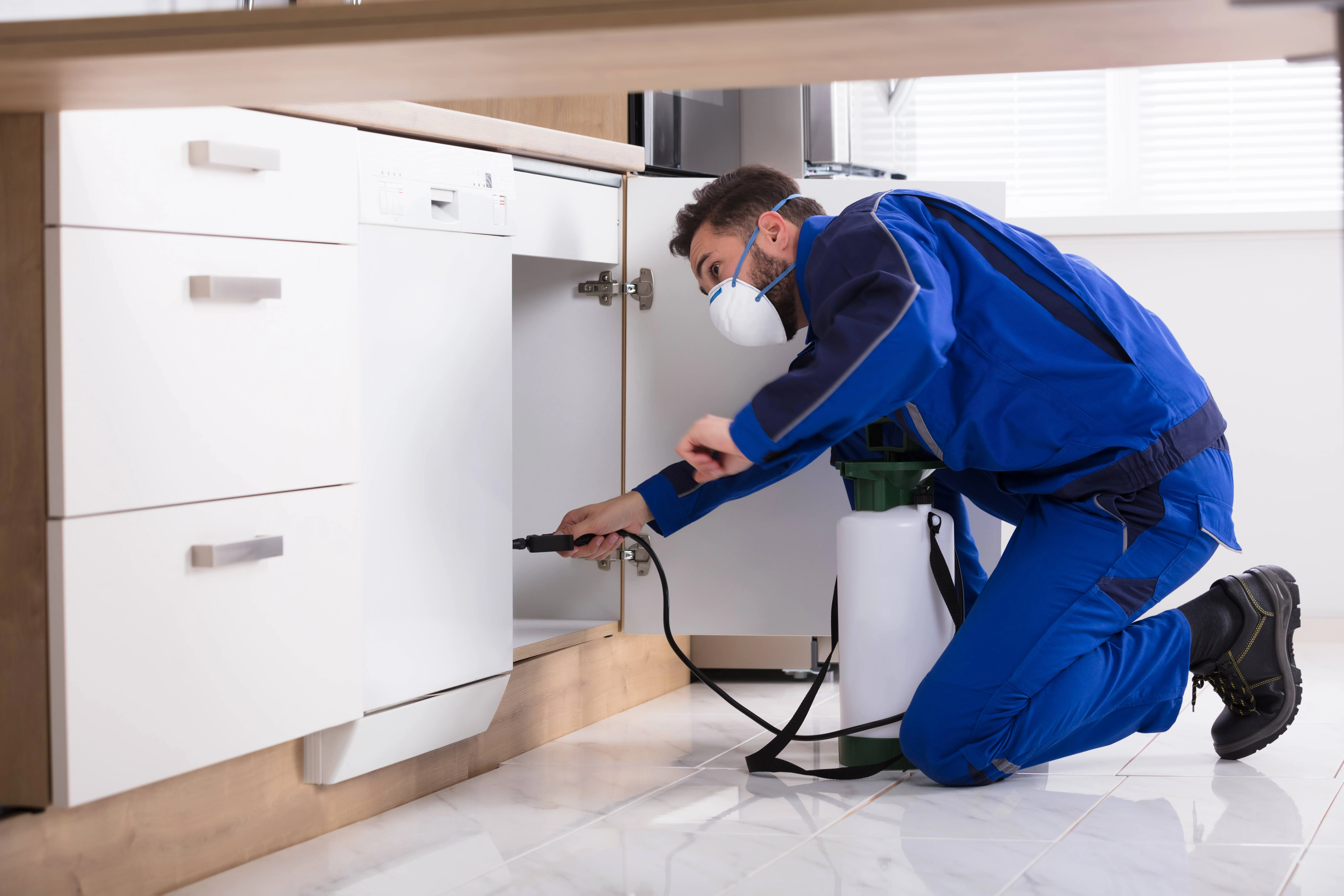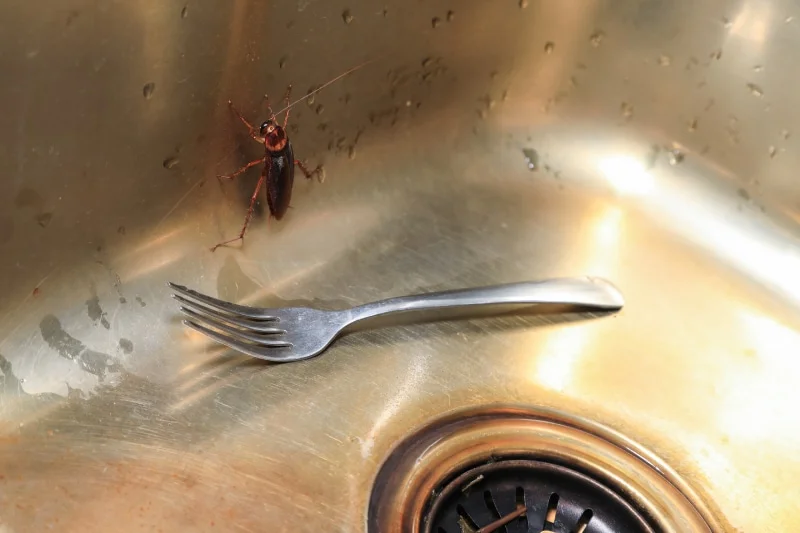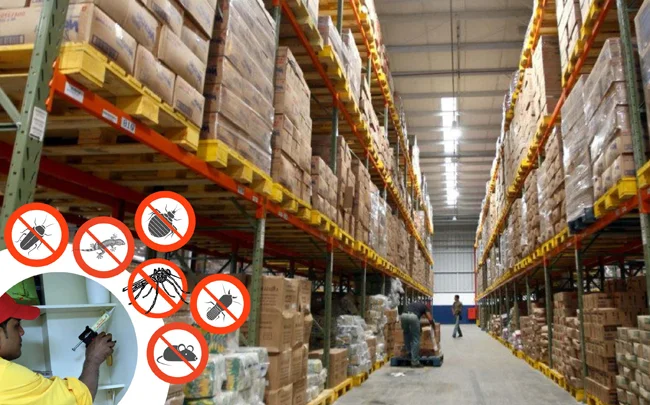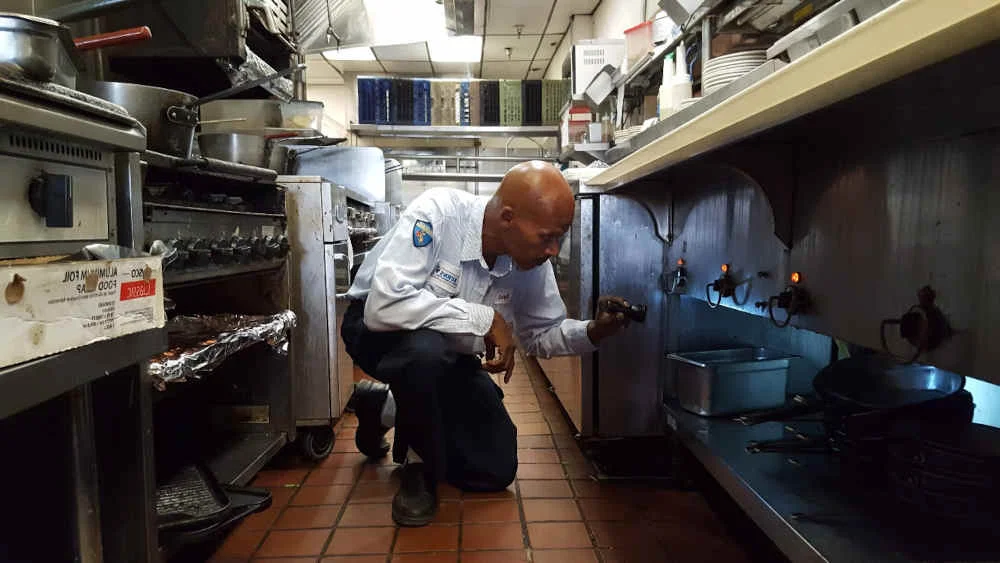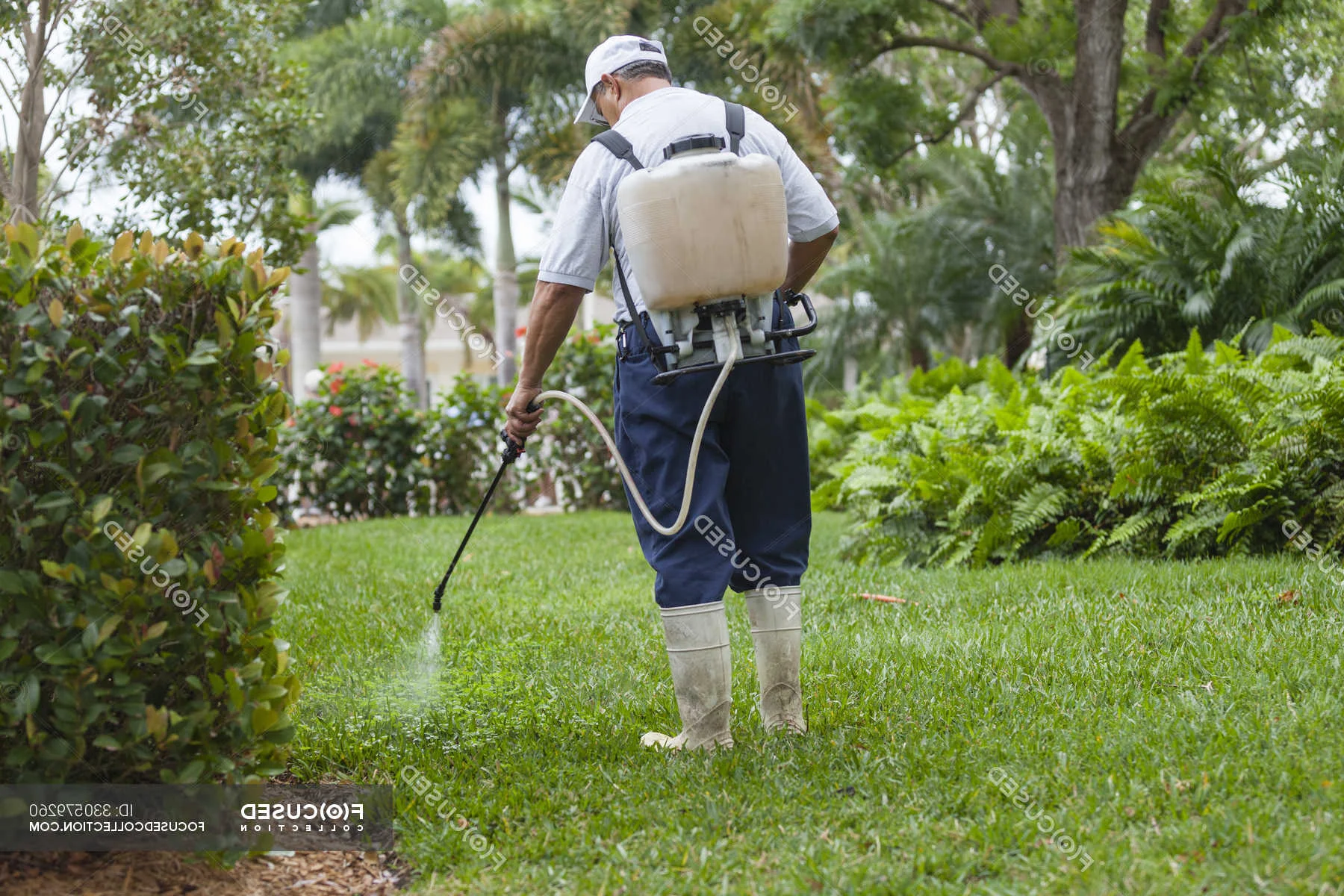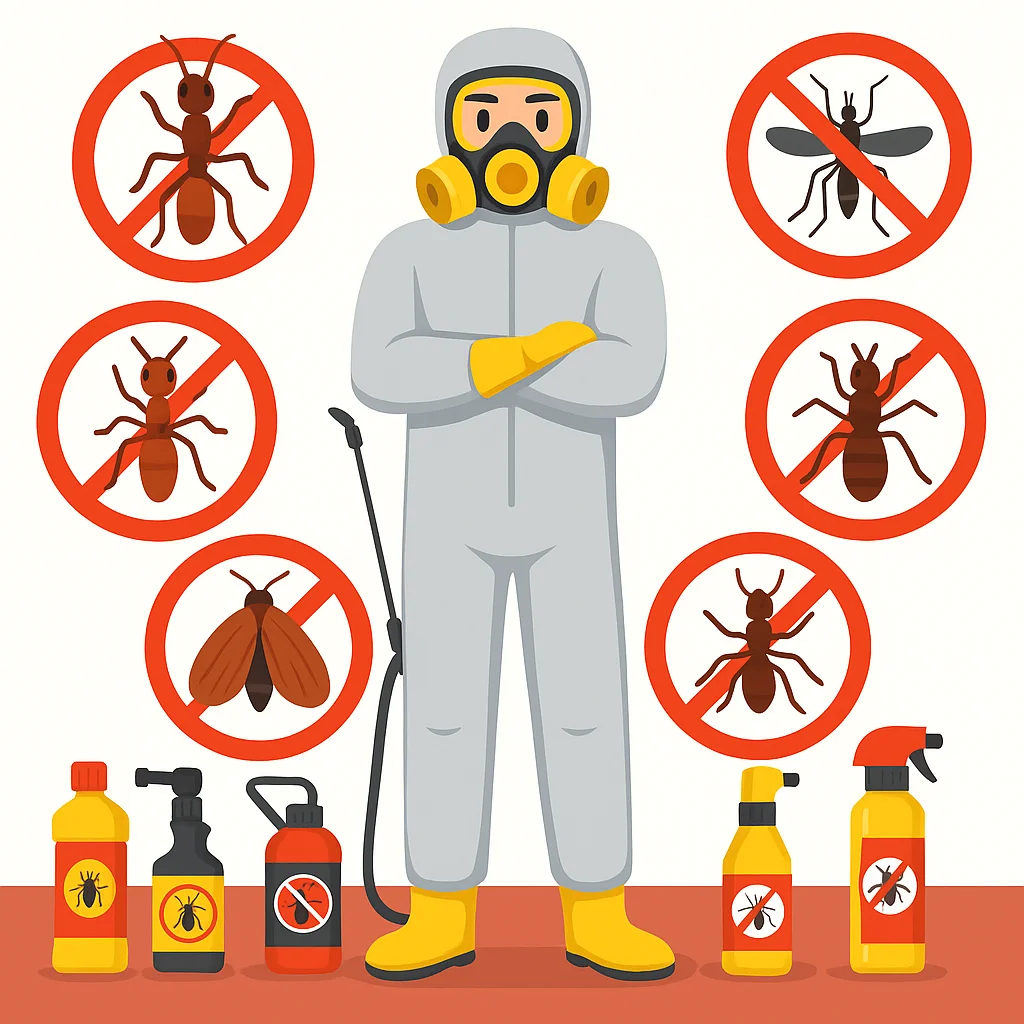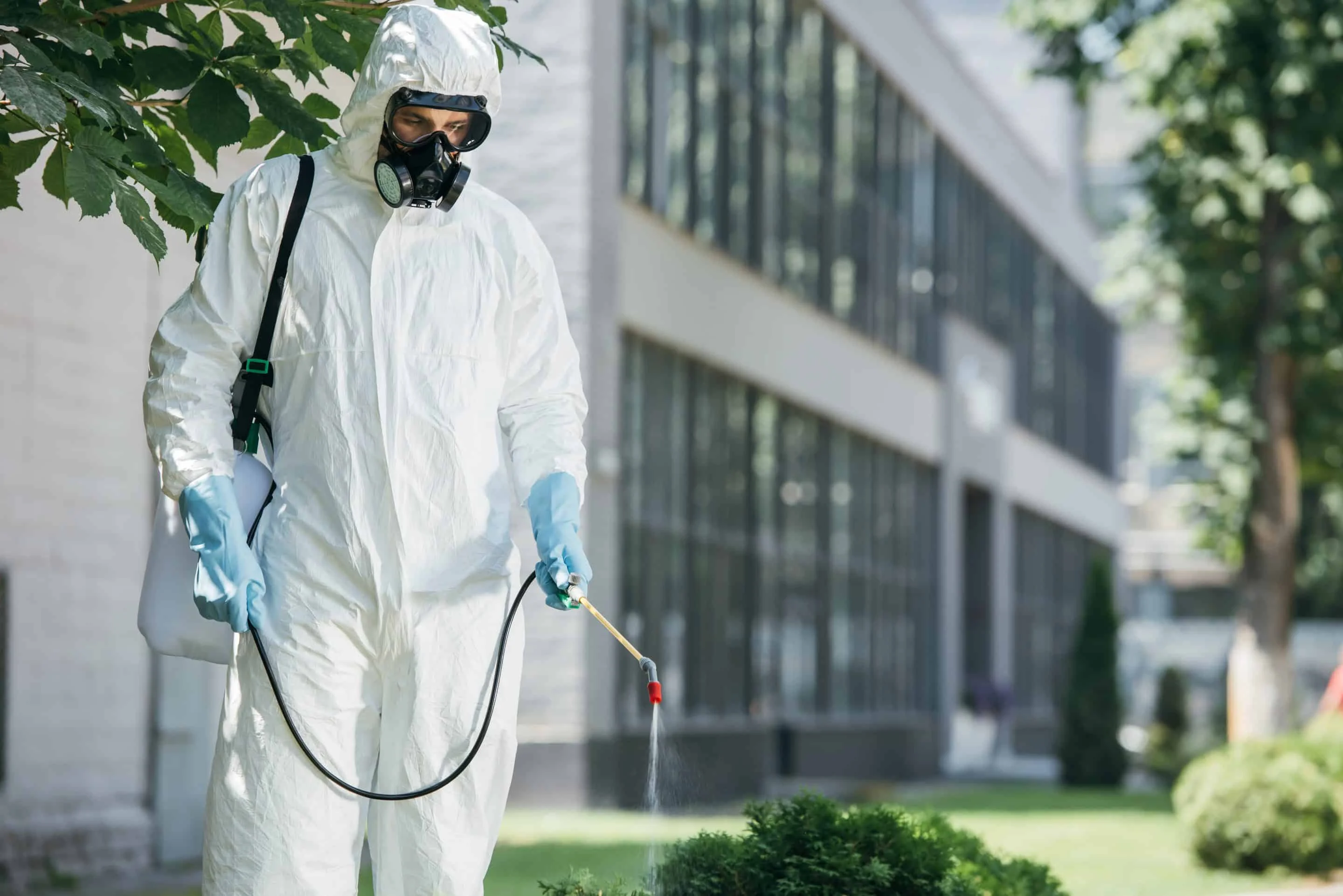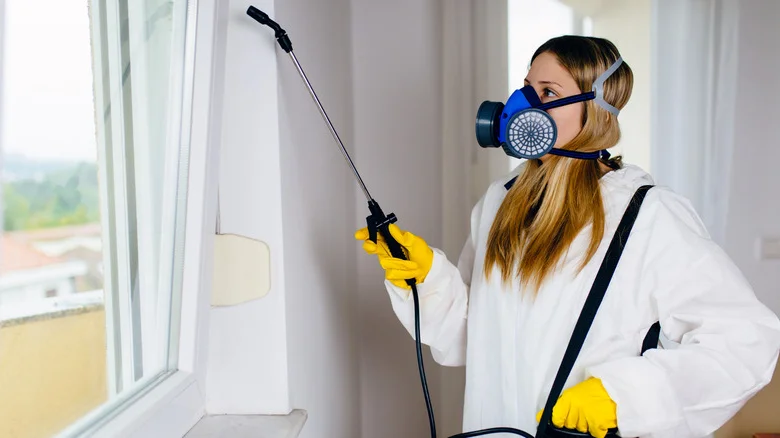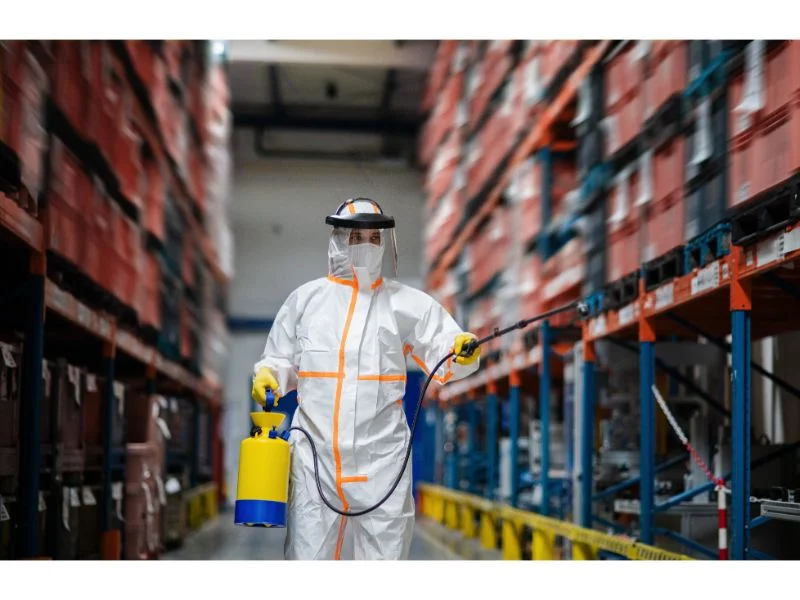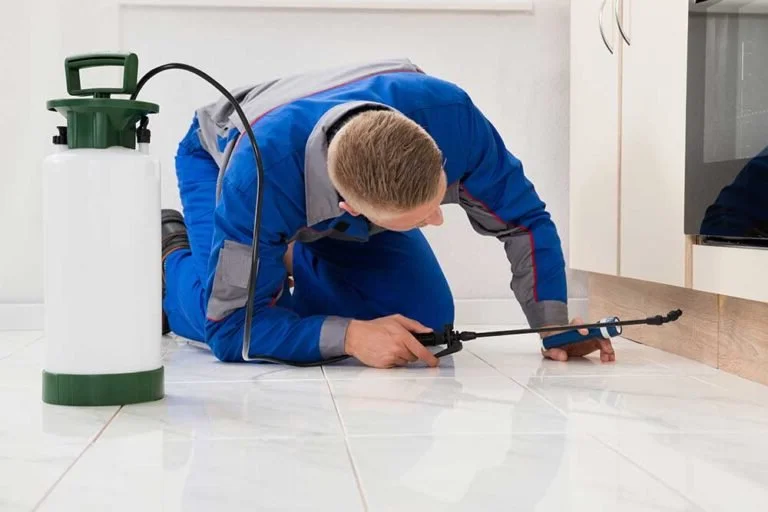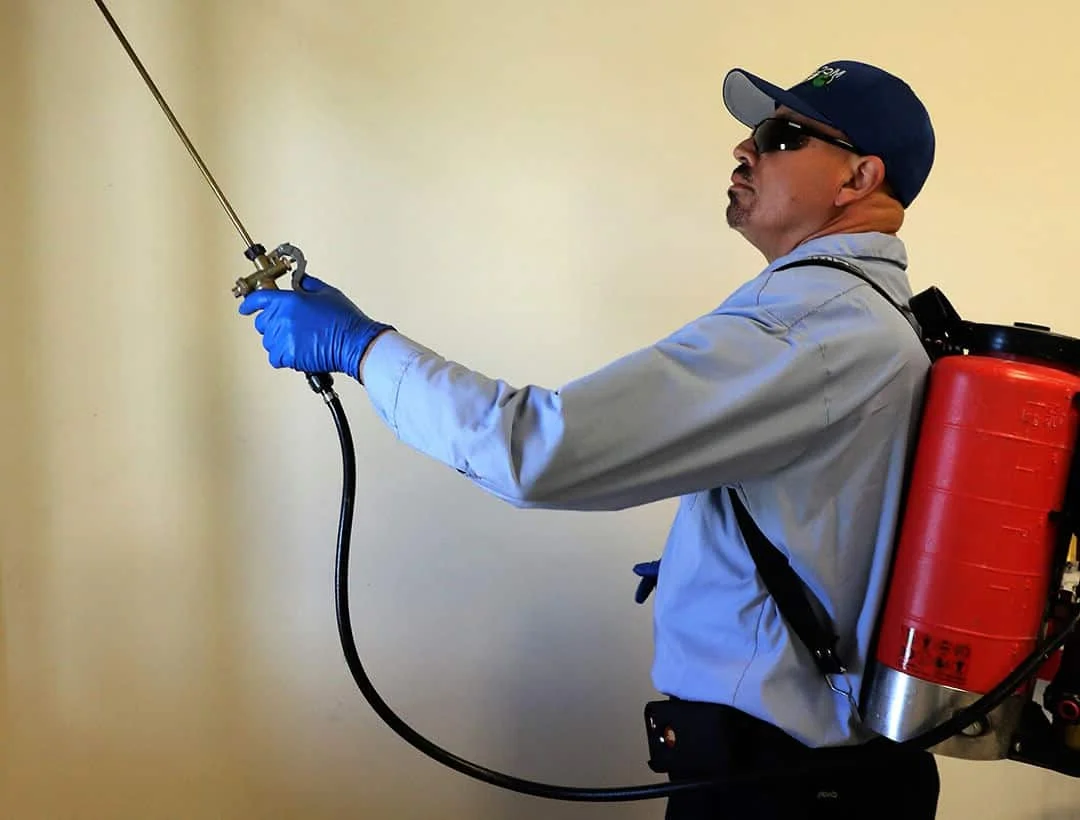Opening your pantry to find tiny insects crawling through your flour, cereal, or spices is both disgusting and costly. Stored product pests are among the most economically damaging household invaders, capable of contaminating entire food supplies and rendering hundreds of dollars worth of groceries unusable. These specialized insects have evolved to exploit the concentrated food sources found in human storage areas, from home pantries to commercial warehouses. Effective stored product pest control requires understanding the complex life cycles of various pest species, identifying infested products before contamination spreads, and implementing comprehensive treatment strategies that eliminate existing populations while preventing future invasions.
Stored product pest infestations can remain hidden for months while populations build to devastating levels inside sealed packages and containers. By the time homeowners notice adult insects flying around the kitchen or crawling across counters, extensive contamination has typically occurred throughout the pantry. These pests don't just consume food – they contaminate it with their excrement, cast skins, webbing, and dead bodies, making entire packages unsafe for consumption. Professional pantry pest extermination services provide the specialized knowledge and systematic approaches necessary to eliminate these persistent invaders while protecting your food investment and family health.
Found bugs in your food storage? Our expert team provides
immediate pantry pest control
Fast Response and comprehensive
stored product pest elimination to protect your food supply.
Get help now!
Common Types of Stored Product Pests
Stored product pests comprise a diverse group of insects that have specialized to exploit the concentrated food sources found in human storage areas. Understanding the specific pest species involved is crucial for effective control because different insects have distinct life cycles, food preferences, and behavior patterns that influence treatment approaches.
Grain Beetles and Weevils
Grain beetles and weevils are among the most destructive stored product pests
Grain beetles and weevils represent some of the most destructive stored product pests, capable of completely destroying grain-based products from the inside out. Rice weevils, granary weevils, and various flour beetles are common household invaders that can develop from egg to adult entirely within food packages. Adult females drill holes into individual grain kernels to lay their eggs, and the developing larvae consume the grain from within, often leaving only hollow shells behind.
These pests are particularly challenging because their early development stages occur hidden inside food products, making detection difficult until populations reach significant levels. A single female weevil can lay over 150 eggs during her lifetime, and under optimal conditions, these insects can complete their development in as little as 30 days, leading to rapid population explosions that can devastate stored food supplies.
Pantry Moths
Indian meal moths create distinctive webbing and contamination in food products
Indian meal moths are the most common pantry moth species, easily recognized by their distinctive copper-colored wing tips and their larvae's characteristic webbing throughout infested products. These moths have an incredibly broad diet, attacking everything from grains and cereals to dried fruits, nuts, spices, and even pet food. The larvae create silk webbing as they feed, which not only contaminates food but also helps identify the source of infestations.
Female moths seek out food sources to lay their eggs, often depositing them in cracks and crevices of packaging or directly on food surfaces. The resulting larvae can chew through packaging materials including cardboard, plastic bags, and even some sealed containers, spreading contamination throughout storage areas. Adult moths flying around the kitchen are often the first sign homeowners notice, but by this time, multiple generations may have developed throughout the pantry.
Dermestid Beetles
Dermestid beetles, including carpet beetles and larder beetles, are opportunistic stored product pests that feed on both plant and animal materials. These beetles commonly infest dried meats, cheese, pet food, and grain products, but they can also attack wool, silk, and other natural materials found throughout the home. Their larvae are particularly destructive, capable of chewing through packaging and contaminating large areas with their molted skins and fecal pellets.
Unlike some stored product pests that remain hidden within food packages, dermestid beetles often wander throughout the home, making them easier to detect but also more likely to spread infestations to new areas. These beetles can survive on very small amounts of food and can remain dormant for extended periods, making them particularly persistent pests that require professional intervention for complete elimination.
Drugstore and Cigarette Beetles
Drugstore beetles and cigarette beetles are small, round beetles that attack a remarkably wide range of stored products. Drugstore beetles earned their name from their tendency to infest pharmaceutical preparations, but they also attack spices, dried flowers, pet food, and even books and manuscripts. Cigarette beetles specialize in tobacco products but also infest spices, dried fruits, and grain-based foods.
These beetles are excellent fliers and can spread infestations throughout buildings, making them particularly challenging for homeowners to control. Their small size allows them to exploit tiny openings in packaging, and their ability to digest cellulose enables them to attack a broader range of materials than many other stored product pests. Professional identification is often necessary to distinguish between these similar-looking species and develop appropriate control strategies.
Detecting and Identifying Stored Product Pest Infestations
Early detection of stored product pest infestations is critical for minimizing food loss and preventing widespread contamination throughout storage areas. These pests are masters of concealment, developing hidden within food packages where they remain undetected until populations reach significant levels. Professional inspectors use systematic approaches to identify infestations before they cause extensive damage and contamination.
Effective detection requires understanding the behavior patterns and life cycles of different stored product pest species. Some pests remain entirely within food packages throughout their development, while others emerge as adults to seek new food sources or mates. This knowledge helps inspectors know where to look for evidence and how to interpret the signs they discover.
Physical Signs of Infestation
-
Live or Dead Insects Adult beetles, moths, or larvae found in or around food storage areas. Different species have distinctive appearances that help identify the specific pest involved and guide treatment decisions.
-
Webbing and Silk Fine silk threads or webbing throughout food products, particularly common with moth infestations. This webbing contaminates food and provides evidence of larval feeding activity.
-
Exit Holes Small, round holes in grain kernels, packaging, or food products where adult insects have emerged. These holes indicate completed development cycles and established breeding populations.
-
Powdery Residue Fine dust or powder around food packages from insect feeding activity and fecal material. This contamination makes food unsafe for consumption even if insects are removed.
-
Cast Skins and Pupal Cases Molted larval skins and empty pupal cases found in food packages or storage areas, indicating ongoing development and reproduction within the infestation site.
-
Unusual Food Odors Off odors from infested products caused by insect waste, secretions, and decomposition. These odors often persist even after visible contamination is removed.
Behavior-Based Detection Methods
Professional detection methods go beyond visual inspection to include behavior-based monitoring that can identify infestations before obvious signs appear. Understanding how different stored product pests behave allows inspectors to predict where infestations are likely to develop and implement monitoring systems that provide early warning of pest activity.
These advanced detection methods are particularly important for commercial facilities where early detection can prevent massive product losses and contamination events that could threaten business operations. However, these techniques are also valuable for residential properties where they can protect significant food investments and prevent widespread pantry contamination.
-
Pheromone Monitoring Specialized traps that use species-specific pheromones to attract and capture adult insects, providing early detection and population monitoring capabilities for targeted species.
-
Flight Pattern Observation Systematic observation of adult moth and beetle flight patterns to identify source areas and track infestation spread throughout storage facilities.
-
Temperature Monitoring Tracking temperature patterns in stored products that may indicate insect activity, as developing larvae generate heat that can be detected in large-scale storage situations.
-
Systematic Inspection Protocols Regular, comprehensive examination of all stored products using standardized procedures that ensure consistent detection of early-stage infestations.
-
Food Product Sampling Strategic sampling of susceptible products to identify hidden infestations before they become apparent through visual inspection or insect emergence.
Professional Identification Advantage
Accurate species identification is crucial for effective stored product pest control because different species require different treatment approaches. Professional entomologists can distinguish between similar-looking species and recommend targeted control strategies that maximize effectiveness while minimizing unnecessary treatments.
Economic Impact of Stored Product Pest Infestations
The economic impact of stored product pest infestations extends far beyond the obvious cost of discarded food products. These pests can cause substantial financial losses through direct food contamination, cleanup and replacement costs, and the hidden expenses associated with widespread pantry infestations. Understanding the true cost of these infestations emphasizes why professional stored product pest control is a wise investment rather than an unnecessary expense.
For commercial operations, stored product pest infestations can result in massive product recalls, regulatory violations, customer complaints, and potential lawsuits that threaten business viability. Even residential infestations can cost hundreds or thousands of dollars in discarded food, cleanup efforts, and replacement purchases, making professional intervention a cost-effective solution for protecting food investments.
Residential Cost Factors
-
Food Replacement Costs Complete loss of infested products plus the cost of replacing entire pantry contents when contamination spreads throughout storage areas. A single infestation can result in hundreds of dollars in food losses.
-
Container and Storage Replacement Contaminated storage containers, jars, and packaging materials that must be discarded and replaced to prevent re-infestation from residual eggs and larvae.
-
Cleanup and Sanitation Expenses Professional cleaning services or the time and materials required for thorough decontamination of pantry areas, cabinets, and storage spaces.
-
Ongoing Monitoring Costs Replacement traps, inspection materials, and other monitoring supplies needed to prevent future infestations and ensure complete elimination of existing problems.
-
Opportunity Costs Time spent identifying infested products, cleaning contaminated areas, shopping for replacements, and implementing prevention measures instead of other productive activities.
Commercial Impact Considerations
Commercial operations face exponentially higher risks from stored product pest infestations due to the scale of their operations and regulatory oversight. Food processing facilities, warehouses, grocery stores, and restaurants must maintain strict pest control standards to comply with health regulations and protect their business reputation.
The cost of commercial infestations includes not only direct product losses but also regulatory fines, business interruption, customer compensation, and the long-term reputation damage that can affect sales and customer relationships for years after the initial infestation is resolved.
-
Product Recalls and Liability Costs associated with recalling contaminated products from distribution channels, customer compensation, and potential lawsuits from contaminated product consumption.
-
Regulatory Compliance Issues Fines, penalties, and temporary closure orders from health departments and regulatory agencies that discover pest contamination during inspections.
-
Business Interruption Losses Revenue lost during cleanup and remediation periods when operations must be suspended to address contamination and implement corrective measures.
-
Customer Relationship Damage Long-term sales impacts from negative publicity, customer complaints, and loss of confidence in product quality and safety standards.
-
Insurance and Legal Costs Increased insurance premiums, legal defense costs, and potential settlement payments related to contamination incidents and customer claims.
Professional Stored Product Pest Control Methods
Effective stored product pest control requires a systematic approach that addresses all life stages of the target pests while preventing re-infestation from residual populations or external sources. Professional treatment programs combine multiple control methods tailored to the specific pest species, infestation severity, and facility requirements.
Comprehensive Inspection and Assessment
Professional stored product pest control begins with a thorough inspection that identifies not only the presence of pests but also the extent of contamination, the specific species involved, and the environmental factors that enabled the infestation to develop. This comprehensive assessment provides the foundation for developing an effective treatment strategy that addresses all aspects of the problem.
The inspection process includes examination of all stored products, packaging materials, storage containers, and facility infrastructure that could harbor pest populations. Professional inspectors use specialized equipment and systematic procedures to ensure that all potential infestation sources are identified and addressed in the treatment program.
Sanitation and Product Removal
Effective stored product pest control requires complete removal of all contaminated products and thorough sanitation of storage areas. This process eliminates existing food sources for pest populations while removing eggs, larvae, and pupae that could continue developing even after adult populations are controlled. Professional sanitation goes beyond simple cleaning to include specialized procedures that eliminate pest life stages and prevent re-infestation.
The sanitation process must be systematic and thorough because stored product pests can survive on very small amounts of food debris and can exploit microscopic food residues that might not be apparent during casual cleaning. Professional sanitation ensures that all potential food sources are eliminated and that storage areas are properly prepared for ongoing pest prevention.
-
Product Evaluation and Disposal Systematic examination of all stored products to identify contamination levels and determine which items can be salvaged versus those requiring disposal for safety reasons.
-
Deep Cleaning Protocols Comprehensive cleaning of storage areas including removal of food debris from cracks, crevices, and hard-to-reach areas where pest populations can persist.
-
Container Decontamination Professional cleaning or replacement of storage containers, jars, and packaging materials that may harbor pest eggs or larvae in microscopic cracks and crevices.
-
Structural Cleaning Detailed cleaning of shelving, cabinets, and storage infrastructure to remove food residues and pest debris that could support surviving populations.
-
Waste Management Proper disposal of contaminated materials using methods that prevent pest escape and re-infestation during the removal process.
Targeted Chemical Treatments
Chemical treatments for stored product pests must be carefully selected and applied to ensure effectiveness against target species while maintaining food safety standards. Professional treatments use products specifically formulated for use in food storage areas, with application methods that minimize contamination risks while maximizing pest elimination capabilities.
Treatment applications focus on areas where pests harbor and travel rather than direct application to food storage surfaces. This targeted approach ensures effective pest control while maintaining the safety of stored food products and compliance with food safety regulations.
-
Crack and Crevice Applications Precise treatment of hiding places and harborage areas where stored product pests shelter during non-feeding periods, using specialized equipment to reach inaccessible areas.
-
Residual Surface Treatments Strategic application of long-lasting insecticides to surfaces where pests travel and contact during normal movement patterns throughout storage areas.
-
Space Treatments Aerosol or fogging applications designed to reach flying adults and pests in difficult-to-access areas during specific windows when maximum effectiveness can be achieved.
-
Growth Regulator Applications Specialized products that disrupt pest development and reproduction cycles, providing long-term population suppression even if some individuals survive initial treatments.
-
Monitoring Station Placement Strategic placement of monitoring and bait stations that provide ongoing pest detection and population control capabilities between service visits.
Environmental Management
Long-term stored product pest control requires addressing the environmental conditions that allow these pests to establish and maintain populations. Professional programs include recommendations for storage improvements, facility modifications, and management practices that create conditions unsuitable for pest survival and reproduction.
Environmental management focuses on eliminating the conditions that stored product pests require for successful reproduction and development. This includes addressing temperature, humidity, food availability, and structural factors that influence pest survival and population growth.
Don't let stored product pests destroy your food supply and threaten your family's health! Our professional
pantry pest extermination services guarantee complete elimination –
contact us today for comprehensive stored product pest control!
Comprehensive Prevention Strategies for Stored Product Pests
Effective stored product pest prevention is the most cost-effective approach to avoiding the devastating consequences of pantry pest infestations. Prevention strategies focus on creating conditions that prevent pest establishment while implementing monitoring and management practices that detect and address problems before they become serious infestations. Professional prevention programs provide long-term protection for food investments while reducing the likelihood of costly contamination events.
Successful prevention requires understanding how stored product pests enter facilities, what conditions they need for survival and reproduction, and how to create barriers that prevent their establishment. These strategies are particularly important because stored product pest infestations can develop undetected for months while causing extensive contamination throughout storage areas.
Proper Storage Techniques
-
Sealed Container Storage Use airtight containers made of glass, metal, or heavy plastic for all susceptible food products. Proper sealing prevents pest access while maintaining food quality and freshness for extended periods.
-
First-In-First-Out Rotation Implement systematic rotation of stored products to ensure older items are used before newer purchases. This rotation prevents long-term storage that allows pest populations to develop undetected.
-
Temperature Control Maintain storage temperatures below 60°F when possible to slow pest development and reproduction. Cold storage significantly extends the time required for pest populations to reach damaging levels.
-
Humidity Management Control moisture levels in storage areas to prevent conditions that support pest survival and reproduction. Many stored product pests require specific humidity ranges for successful development.
-
Isolation Protocols Quarantine new products for observation periods before introducing them to main storage areas, allowing detection of any pest contamination before it can spread to existing stores.
Facility Management Practices
Professional facility management practices create environments that are inherently resistant to stored product pest establishment while supporting early detection of any pest activity that does occur. These practices focus on eliminating the conditions that pests need for survival while implementing monitoring systems that provide early warning of potential problems.
Effective facility management requires regular attention to detail and systematic implementation of proven prevention protocols. These practices are essential for both residential and commercial operations where food storage represents significant economic value and where contamination could have serious health or business consequences.
-
Regular Inspection Schedules Systematic examination of all stored products and storage areas using standardized procedures that ensure consistent detection of early-stage pest activity.
-
Sanitation Protocols Comprehensive cleaning schedules that eliminate food debris and residues that could support pest populations, focusing on areas that are often overlooked during routine cleaning.
-
Structural Maintenance Regular repair and maintenance of storage areas to eliminate cracks, gaps, and other structural defects that provide pest harborage and breeding sites.
-
Inventory Management Systematic tracking of stored products to ensure rapid detection of contamination and prevent long-term storage that increases pest risk.
-
Staff Training Education programs for household members or employees on proper storage techniques, early detection methods, and prevention practices that support overall pest management goals.
Monitoring and Early Detection
Advanced monitoring systems provide early warning of stored product pest activity before infestations become established and cause significant contamination. Professional monitoring combines multiple detection methods to ensure that pest activity is identified quickly and accurately, enabling rapid response that prevents minor problems from becoming major infestations.
Early detection is particularly critical for stored product pests because their secretive nature and long development periods mean that infestations can reach devastating levels before becoming apparent through casual observation. Professional monitoring systems overcome this challenge by providing systematic detection capabilities that identify problems at the earliest possible stage.
-
Pheromone Trap Networks Species-specific monitoring traps placed throughout storage areas to detect adult pest activity and track population trends over time.
-
Visual Inspection Programs Regular, systematic examination of stored products and storage areas using standardized procedures that ensure comprehensive coverage.
-
Digital Monitoring Systems Advanced technologies that provide real-time detection and reporting of pest activity, enabling immediate response to emerging problems.
-
Temperature and Humidity Monitoring Environmental monitoring that tracks conditions conducive to pest development and alerts managers to environmental changes that increase infestation risk.
-
Product Sampling Programs Strategic sampling of susceptible products to detect hidden infestations before they become apparent through other monitoring methods.
Commercial and Industrial Stored Product Pest Management
Commercial and industrial facilities face unique stored product pest challenges due to the scale of their operations, regulatory requirements, and economic consequences of contamination events. Food processing plants, warehouses, distribution centers, and retail facilities require specialized management programs that address their specific operational needs while maintaining compliance with industry standards and regulations.
Professional commercial stored product pest control programs provide comprehensive solutions that protect product integrity, ensure regulatory compliance, and minimize business disruption. These programs combine advanced monitoring technologies, systematic treatment protocols, and ongoing management support to maintain pest-free operations even in high-risk environments.
Industry-Specific Requirements
-
Food Processing Facilities Comprehensive programs that meet HACCP requirements and maintain food safety standards while providing effective pest control throughout complex processing and storage operations.
-
Grain Storage and Milling Operations Specialized treatments for bulk grain storage facilities that protect valuable commodities while maintaining operational efficiency and meeting agricultural industry standards.
-
Distribution and Warehousing Large-scale monitoring and control systems designed for high-volume facilities with complex logistics operations and multiple product streams.
-
Retail Food Operations Customer-focused programs that maintain product quality and store appearance while providing effective pest control in high-traffic retail environments.
-
Pet Food and Feed Manufacturing Specialized approaches for facilities handling animal feeds and pet foods that require different regulatory compliance and contamination prevention strategies.
Advanced Commercial Technologies
Commercial operations benefit from advanced technologies that provide precise monitoring, rapid response capabilities, and comprehensive data management for regulatory compliance and operational optimization. These technologies enable facility managers to maintain detailed records of pest management activities while ensuring immediate response to emerging problems.
Integration of multiple monitoring and control technologies creates comprehensive management systems that provide both immediate operational benefits and long-term strategic advantages for maintaining pest-free operations and protecting product quality.
-
Automated Monitoring Networks Connected sensor systems that provide real-time detection and reporting of pest activity throughout large facilities, enabling immediate response to emerging problems.
-
Data Management Platforms Comprehensive software systems that track pest activity trends, treatment effectiveness, and regulatory compliance documentation for audit and optimization purposes.
-
Remote Surveillance Systems Advanced camera and sensor technologies that enable continuous monitoring of critical areas without requiring constant human presence.
-
Precision Application Equipment Specialized treatment equipment designed for large-scale operations that ensures accurate product application while minimizing contamination risks.
-
Environmental Control Integration Coordination with facility HVAC and environmental control systems to optimize conditions for pest prevention while maintaining product quality requirements.
Regulatory Compliance and Documentation
Commercial stored product pest management programs must maintain detailed documentation to demonstrate regulatory compliance and support quality assurance programs. Professional services provide comprehensive record-keeping that satisfies audit requirements while supporting continuous improvement in pest management effectiveness.
Documentation requirements vary by industry and regulatory jurisdiction, but generally include detailed records of monitoring activities, treatment applications, corrective actions, and ongoing prevention measures. Professional programs ensure that all documentation meets current standards and provides the detailed information required for regulatory compliance.
Emergency Stored Product Pest Response Services
Some stored product pest situations require immediate professional intervention to prevent catastrophic contamination events or business disruption. Our emergency stored product pest response services provide rapid assessment and immediate action when standard scheduling cannot address the urgency of the situation. We understand that pest contamination can threaten business operations, regulatory compliance, and food safety in ways that demand immediate professional response.
Emergency situations often involve large-scale contamination events, imminent regulatory inspections, or discoveries of pest activity that threaten valuable product shipments or special events. Our emergency response team carries specialized equipment and has the expertise to provide immediate contamination assessment and rapid population reduction while implementing comprehensive elimination strategies.
Critical Emergency Situations
-
Regulatory Inspection Threats When upcoming health department or regulatory inspections could result in violations, fines, or facility closure due to stored product pest contamination requiring immediate intervention.
-
Large-Scale Contamination Events When pest activity is discovered throughout extensive food storage areas, threatening massive product losses and requiring coordinated emergency response to minimize damage.
-
Product Shipment Contamination When pest contamination is discovered in products ready for shipment or distribution, requiring immediate assessment and corrective action to prevent customer contamination.
-
Food Safety Emergencies When pest contamination poses immediate health risks or threatens food safety protocols in commercial food operations requiring urgent professional intervention.
-
Business Continuity Threats When pest activity threatens critical business operations, special events, or time-sensitive activities that cannot be delayed or relocated due to contamination concerns.
Rapid Response Capabilities
Our emergency stored product pest team provides rapid response for critical situations, typically arriving within 2-4 hours for true emergencies. We can immediately assess contamination extent, implement containment measures, and begin population reduction activities to minimize further damage and contamination spread.
Seasonal Patterns in Stored Product Pest Activity
Spring (March-May)
- Increased pest activity as temperatures warm
- Adult emergence from overwintering populations
- Peak mating and reproduction initiation
Focus: Intensive monitoring and early intervention to prevent population establishment before peak breeding season.
Summer (June-August)
- Maximum reproductive activity and population growth
- Optimal development conditions for most species
- Highest risk for new infestation establishment
Focus: Aggressive prevention measures and enhanced monitoring to detect and eliminate developing populations quickly.
Fall (September-November)
- Final reproductive cycles before winter
- Population concentration in storage areas
- Critical prevention period for winter survival
Focus: Comprehensive treatment and exclusion work to eliminate populations before winter establishment period.
Winter (December-February)
- Reduced activity in unheated storage areas
- Continued development in climate-controlled facilities
- Planning period for annual prevention programs
Focus: Target overwintering populations and implement comprehensive prevention strategies for coming year.
What Our Clients Say About Our Stored Product Pest Control
"We discovered grain beetles throughout our pantry and were devastated by the contamination. The professional team not only eliminated the infestation but helped us implement storage systems that have kept us pest-free for over two years."
- Patricia R., Homeowner
★★★★★
"Our warehouse faced a massive Indian meal moth infestation that threatened millions of dollars in product. The emergency response team contained the problem and eliminated the entire population in just three weeks, saving our business."
- James M., Warehouse Manager
★★★★★
"The comprehensive monitoring program has transformed our facility's pest management. We now detect problems before they become infestations and have maintained perfect compliance for over three years running."
- Dr. Susan L., Quality Assurance Director
★★★★★
Frequently Asked Questions About Stored Product Pest Control
How can I tell if my stored food is contaminated with pests?
Look for live or dead insects, webbing, small holes in packaging, powdery residue, or unusual odors in stored food products. Contamination may not be immediately obvious because many stored product pests develop inside sealed packages. Professional inspection can identify contamination before it becomes apparent through casual observation and help prevent spread to other products.
Is it safe to eat food that had bugs in it if I remove the insects?
No, food that has been contaminated with stored product pests should not be consumed even after removing visible insects. Pest contamination includes eggs, larvae, fecal material, cast skins, and other debris that cannot be completely removed. Additionally, many people are allergic to insect proteins and debris, which can cause serious reactions even in small quantities.
How long does it take to eliminate a stored product pest infestation?
Complete elimination typically takes 4-8 weeks because stored product pests have multiple life stages that must all be addressed. Eggs and pupae are particularly resistant to treatments, so multiple applications may be necessary to eliminate all developing insects as they emerge. The timeline depends on pest species, infestation extent, and environmental conditions.
How do stored product pests get into sealed packages?
Stored product pests can enter packages in several ways: eggs may be present in products before packaging, adults can chew through packaging materials, or contamination can occur during processing and packaging. Some pests can exploit extremely small openings in packaging, and certain species can actually chew through plastic bags, cardboard, and even some sealed containers.
What's the best way to prevent stored product pest infestations?
Prevention focuses on proper storage in sealed containers, regular inspection of stored products, maintaining clean storage areas, and implementing first-in-first-out rotation. Temperature and humidity control also help prevent pest development. Professional monitoring and prevention programs provide the most reliable long-term protection against infestations.
Don't let stored product pests contaminate your food supply and threaten your health! Contact our expert team for professional
stored product pest control services that guarantee complete elimination and long-term protection –
schedule your inspection today and safeguard your food investment!

